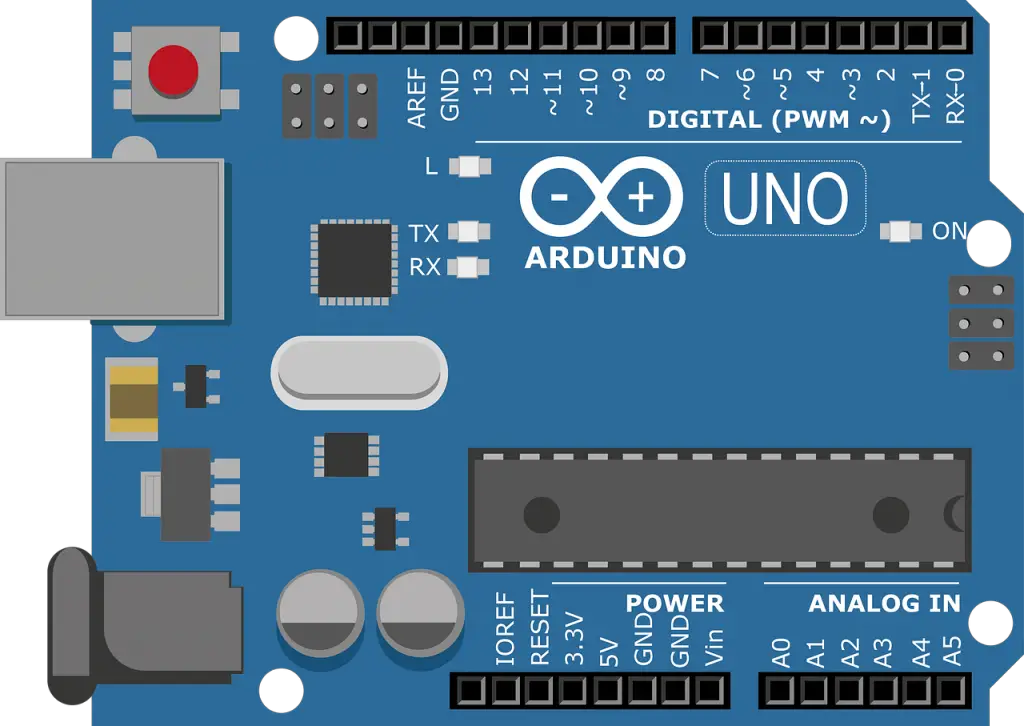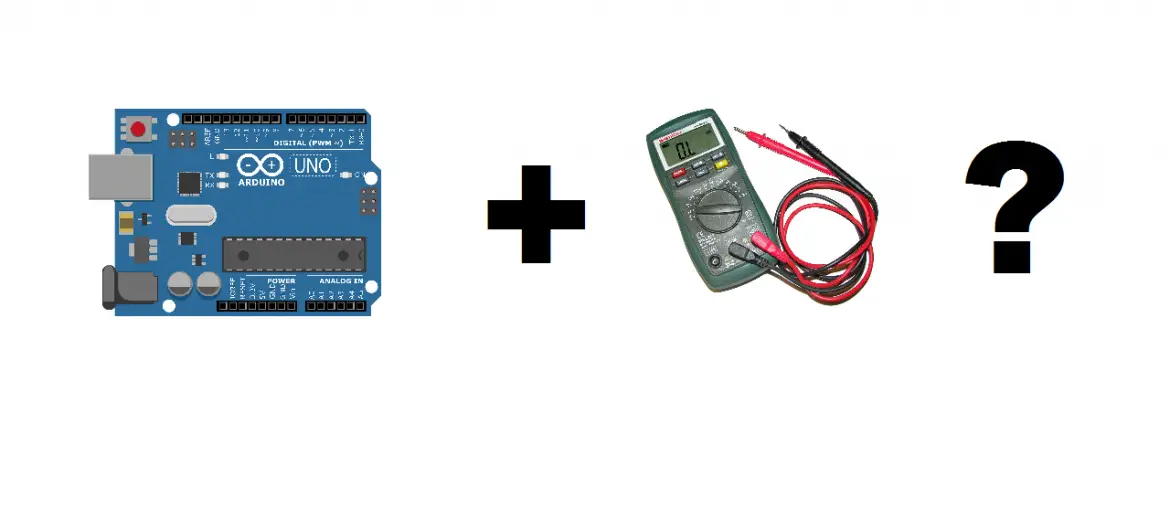Arduino boards are a great way to get started if you are a beginner.
They are development boards that include a microcontroller, power supply, inputs, outputs, Serial communication and much more.
You might have just purchased an Arduino, or are thinking about buying one to get stuck into the world of microcontrollers, electronics and programming.
But, you might also be wondering whether you need a multimeter for an Arduino? While it is not necessary to have a multimeter when you start out with an Arduino, it is recommended that you do have one. Multimeters are great for troubleshooting problems that you might come across with your Arduino projects.
Also, Arduino development boards are not perfect. They are going to have some onboard problems sooner or later.
Again, a multimeter is your best option at identifying the problem.
What is an Arduino
Let’s take a deeper look at the Arduino.
This will help you understand why you might require a multimeter.
Below is one for the most common Arduino development boards; Arduino Uno.

As you can see the Arduino Uno has many components and parts that make up the development board which include;
- Power Input (barrel jack)
- 3.3V power input pin
- 5V power output pin
- Analog Input pins
- Digital Input/Output pins
- Reset Switch
- Microcontroller
- USB port
It is great for the beginner as you do not need to set up a microcontroller on a breadboard with a power supply and capacitors or resistors.
It’s already all done for you on the development board.
Inputs and outputs like LED’s, sensors, motors, displays can be connected to the digital pins as required.
The Arduino can also be programmed using the USB port. It does not require complicated interfacing with a computer.
What are the main uses of a multimeter
The multimeter is an electronic measuring instrument used on a daily basis by Electricians, Engineers, Hobbyists, DIYers and many others.
It has many functionalities but the main three are measuring Voltage, Current, and Resistance.
The most basic of multimeters should include these three measurements.
More complex multimeters can have more than just these three measurements which can include;
- AC (alternating current) voltage and amperage
- DC (direct current) voltage and amperage
- Resistance (ohms)
- Capacity (farads)
- Conductance (siemens)
- Decibels
- Duty cycle
- Frequency (Hz)
- Inductance (henrys)
- Temperature Celsius or Fahrenheit
Multimeters come in Analog and Digital versions, but analog multimeters are less common today due to their inaccuracy.
The main use of a multimeter is to be able to diagnose and troubleshoot electrical and electronic circuitry.
Finding faults and rectifying them is where the multimeter will be your best friend.
Reasons why you might need a multimeter for an Arduino
When starting out on your journey with an Arduino, the projects you will be undertaking will be simple and troubleshooting will not necessarily require a multimeter.
However, as you advance and the Arduino projects you embark on get more complex, you will no doubt require a multimeter to aid you in finding inevitable problems.
We now know that a basic multimeter can measure the three basic electrical values which are voltage, current, and resistance.
So let’s look at some reasons why you might want to invest in a multimeter to help with your Arduino.
Reason #1 why you might need a multimeter for Arduino: Testing Digital and Analog Pins
Ardnuinos come with a varying number of digital pins that can be used either as inputs or as outputs.
Where inputs can include;
- Buttons
- Switches
- Sensors
And outputs can include;
- Motors
- Light Emitting Diodes (LED’s)
- Displays
Smaller components that require less current and voltage, can be powered by the 5 volts outputted at the digital pins.
However, if for some reason the digital pin does not seem to be powering whatever you have connected, you can use the voltage function of the multimeter to check what voltages are present at the digital pins.
Also, an Arduino will have designated analog pins where sensors can be connected to.
A sensor will output voltages in analog form.
However, arduinos only deal with digital data.
The analog pins have the ability to convert the analog data to a digital form.
Sometimes, the wrong digital values will be generated by software.
You can see where the problem is by double checking the voltage at the analog pins and cross checking them with the digital values.
Reason #2 why you might need a multimeter for Arduino: Testing Voltages
Initially your circuits will be confined to onboard the Arduino itself.
But, sooner or later your projects will extend to outside of the Arduino, and onto something like a breadboard.
The more wiring and connections that are required, the more chances of error. These errors tend to show themselves as wrong voltages.
Therefore fault finding when something is not working without a multimeter is going to be very very hard, and annoying.
Using a multimeter, the circuit schematic and a little electronic knowledge you should be able to find solutions to your problem in no time.
Reason #3 why you might need a multimeter for Arduino: Current consumption
If the next project you are undertaking requires a means of mobile power (like a battery), the circuit will need to be as efficient as possible to extend the life of the batteries.
If you don’t know how much Current the system you are designing is consuming how will you know whether it is efficient or not?
Utilising the ability of the multimeter to measure current, you will be able to deduct if any improvements need to be made.
Reason #4 why you might need a multimeter for Arduino: Resistance and Continuity
No matter whether you are a beginner or an expert, you are going to encounter a resistor or two, or a hundred.
These little buggers have many uses in an electronic circuit and come in a variety of shapes, sizes and resistance values.
Even though resistors have colour bands on them which indicates what resistance value they are, it can get quite annoying trying to squint and constantly check the colours.
A workaround to this problem is using a multimeter (no surprises there)!
You will easily be able to tell what the resistance is of a resistor in any part of the circuit.
Also, multimeter’s have another neat function which allows you to test Continuity.
This test allows you to see if two points of a conducting material are connected and therefore ‘continuous’ allowing the flow of current.
This is great for wires with insulation, or testing parts of a circuit that should be connected together.
Can you get away with not having a multimeter initially?
When you initially start out with the Arduino, your projects are not going to be very complex.
This might include projects such as reading button presses, blinking an LED, reading sensor values etc.
The circuits involved with these are not too intense and only require a few connections.
Saying this, you will still encounter problems. However, finding the cause of the problem and then the solution will be a bit easier.
So, when starting out you do not need a multimeter.
But, it does not hurt to have one as part of your troubleshooting arsenal.
Do you need an expensive multimeter for an Arduino?
No, you do not require an expensive multimeter.
When you are working with an Arduino, there are only a few measurements you want your multimeter to be capable of measuring; Voltage, Current, Resistance and Continuity.
You can get multimeters that won’t break the bank which are still capable of performing these measurements so you can troubleshoot your Arduino and additional circuitry.
The one thing you need to be aware of when selecting a multimeter is the ranges of voltages, and currents it can handle.
It should be able to handle the voltage and currents of the Arduino and other circuitry.
Final thoughts
So, you can see there are many reasons why you would want to invest in a multimeter when using an arduino.
It is a great tool for diagnosing and troubleshooting problems which are inevitable.
While you might not need a multimeter initially when starting out with an Arduino, it will prove useful as you progress in skill level and your projects get a bit more complex.
However, you do not need an expensive multimeter. A decent cheap one with the three basic measurement capabilities (voltage,current and resistance) should be just fine.





